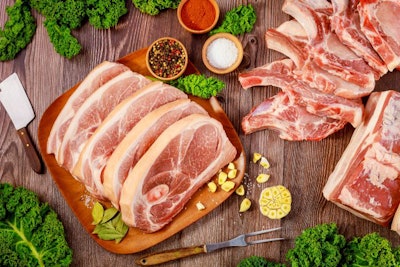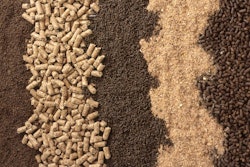
Rabobank projects global pork production to fall 2% this year
High costs and demand uncertainty continue to weigh down global pork production, according to a new report from Rabobank, which said global production is expected to fall 2% in 2022 and remain flat in 2023.
In its Global Pork Quarterly for the fourth quarter of 2022, Rabobank said that, while pork remains a good value, the slowing economy is affecting demand as inflation outpaces wage growth. In anticipation of expected higher demand during the winter holidays, processors have built up inventories.
Pork trade is expected to increase in the fourth quarter of 2022 and early 2023, due to lower global pork inventories and tight supplies of other proteins.
These are among the things to watch in the global pork industry for late 2022 and early 2023, according to Rabobank:
Feed cost volatility
Higher feed and energy costs, as well as regulatory hurdles – particularly in Europe – will challenge producers.
Feed costs are at record levels after disappointing harvests in the U.S. and parts of Europe and Asia. Near-record low grain and oilseed inventories, along with logistics, will threaten feed availability and cost through 2023. Labor and energy costs are compounding these challenges for producers.
Herd health, including African swine fever
Herd health challenges, including African swine fever (ASF), are affecting producers’ willingness to invest in future growth. Herd rebuilding in Asia has mostly been successful, but demand does not support further expansion.
Brazil’s pig herd is the only one expected to grow in 2023, while expectations have been lowered in the U.S., Europe and China.
Sow mortality in the U.S. is contributing to limited growth there.
“Rabobank continues to expect a stabilization in the sow herd and a modest uptick in growth in 2023, although we are not expecting any significant expansion before 2024-25,” the report said.
ASF continues to affect pork production in the Philippines, but the pig herd is stabilizing. Producers are not actively restocking herds due to feed costs and disease concerns.
Classical swine fever in Japan will prolong herd contraction there.
Post-COVID demand recovery in Asia
China’s zero-COVID policy brings uncertainty, but pork demand and prices usually rise in the fourth quarter through the Chinese New Year at the end of January.
In Japan, consumer spending was lower during the summer due to rising COVID-19 cases and disruptions from a typhoon.
Macroeconomic conditions that may affect currency, commodity values
Higher pork prices in the U.S., Canada and the EU limited market competitiveness in the third quarter, but price setbacks and government interventions to stabilize food prices could help strengthen demand.
The macroeconomic outlook and high operating costs in Japan have farmers reluctant to invest.
Competing protein supplies
In the U.S., demand for ham in domestic and export markets is expected to remain strong as highly pathogenic avian influenza (HPAI) has reduced turkey availability. Increased competition from chicken is expected at retail.
In Brazil, pork will face stiff competition from beef, which has seen falling prices since spring, while pork prices have risen.
Geopolitical challenges
Higher energy costs, due to the war in Ukraine, will pressure producers’ margins as well as consumers’ pocketbooks. EU pork demand is not expected to improve.











